 February 24, 2022 John E. Ross, KD8IDJ, Editor
| ||||||
ARRL Board of Directors Elects Officers, Executive Committee
One new face will be among the Officers at the next ARRL Board of Directors meeting in July. The Board met in Windsor, Connecticut, January 21-22, 2022, and elected John R. Sager, WJ7S of Saratoga Springs, Utah to succeed Treasurer Rick Niswander, K7GM, on May 1. Niswander had previously shared his decision to step down, having completed more than 10 years of distinguished service in the volunteer position. Niswander's most recent 2-year term as Treasurer expired in January. The Board re-elected him to continue to serve through April 30, 2022, allowing a transition between Niswander and Treasurer-elect Sager. The remaining Officers were re-elected:
Two new members will fill two openings on the ARRL Board of Directors' Executive Committee (EC), which acts in the Board's stead between scheduled Board meetings. Elected as new EC members are Dakota Division Director Bill Lippert, AC0W, and Pacific Division Director Kristen McIntyre, K6WX. The EC consists of the President, five Directors selected by the Board of Directors for 1-year terms, the First Vice President and CEO. With all positions now filled, the EC members are:
Minutes from the meeting have been posted to the ARRL website. FCC: Amateur Service Licensees May Not Use Their Radios to Commit Criminal Acts The FCC Enforcement Bureau has re-issued its earlier Enforcement Advisory that licensees in the Amateur Radio Service and licensees and operators in the Personal Radio Services are prohibited from using radios in those services to commit or facilitate criminal acts. "The Bureau recognizes that these services can be used for a wide range of permitted and socially beneficial purposes, including As it did in advisories in 2021, the Enforcement Bureau is reminding amateur licensees that they may not transmit, "communications intended to facilitate a criminal act" or "messages encoded for the purpose of obscuring their meaning." "Likewise, individuals operating radios in the Personal Radio Services, a category that includes Citizens Band radios, Family Radio Service walkie-talkies, and General Mobile Radio Service, are prohibited from using those radios "in connection with any activity which is against Federal, State, or local law. "Individuals using radios in the Amateur or Personal Radio Services in this manner may be subject to severe penalties, including significant fines, seizure of the offending equipment, and, in some cases, criminal prosecution. "To report a crime, contact your local law enforcement office or the FBI, the FCC said." Amateur Radio in Ukraine Ordered Off the Air in State of Emergency A state of emergency was declared in Ukraine just prior to the Russian military invasion. Among other things, the February 24 decree from President Volodymyr Zelensky will remain in effect at least for 30 days and may be extended. As published on the website of the Verkhovna Rada, Ukraine's unicameral legislative body, the state of emergency The decree also imposes a ban on mass events and on strikes and authorizes checking the documents of citizens, and if necessary, conducting searches on persons, vehicles, cargo, office space, and housing. A curfew could be imposed. "The situation changes rapidly," IARU Region 1 Secretary Mats Espling, SM6EAN, said. "IARU Region 1 continues to monitor the development and expect all radio amateurs to follow their national laws and regulations." ARRL Podcasts Schedule
The On the Air and Eclectic Tech podcasts are sponsored by Icom. Both podcasts are available on iTunes (iOS) and Stitcher (Android) as well as on Blubrry -- On the Air | Eclectic Tech. Tickets are on Sale for Next QSO Today Virtual Ham Expo, March 12 - 13 ARRL Life Member Courtney Duncan, N5BF, will be the keynote speaker for the QSO Today Virtual Ham Expo on Saturday, March 12, in the QSO Today Virtual Ham Expo auditorium. The semi-annual virtual ham radio gathering will be live on March 12 - 13. Duncan will discuss the importance of amateur radio and technical hobbies in advancing global technology. Just retired from NASA's Jet Propulsion Laboratory (JPL), Duncan supported numerous missions involving This edition of the QSO Today Virtual Ham Expo will showcase a wide range of topics with appeal to newcomers and veterans alike. It's a chance to update your amateur radio knowledge and get exposed to cutting edge ham radio technology as well as practical operating and building techniques. Like a live ham radio convention or hamfest, the Expo has presentations, exhibits, and state-of-the-art "lounges" for face-to-face interaction among participants. Some 60 ham radio luminaries will address a multitude of topics, from DXpeditions to Solar Cycle 25. Some highlights include:
Because it's a virtual event, you don't have to pick and choose which presentations you can attend. You can watch any one of them within 30 days of the Expo as well as explore exhibitor offerings from the comfort of your computer or other device. ARRL The National Association for Amateur Radio® is a QSO Today Virtual Ham Expo Partner. "Early bird" tickets are $10 through March 6 and then $13.50 to the end of the on-demand period. Tickets include entry for the live, 2-day event and the 30-day on-demand period. Cutting-Edge Technology on Display at HamCation 2022 While many ham radio show visitors come for the flea market and a chance to chat with the various vendors, at least a few come to display new technology of the sort that will become mainstream in the amateur radio community Visitors to the ORI booth were treated to an update on ORI's successful DVB-S2X digital satellite television standard modem work and progress on the end-to-end demonstration of the entire satellite transponder chain. "At Open Research Institute, it doesn't work until it works over the air," Thompson told ARRL. "The Phase 4 Digital Multiplexing Transceiver [satellite] project is on budget, on track, and highly likely to succeed. The return on investment is high." She notes that the team continues to work toward innovating, publishing, and enabling high-tech space and terrestrial amateur radio work.
AmbaSat-1 "re-spin" was another frequent topic of conversation, Thompson. The project is a crowd-sourced Low Earth Orbit (LEO) satellite program. AmbaSat-1 is a tiny space satellite kit that you assemble and code yourself. "The five AmbaSat boards from ORI, Thompson was also among the presenters participating in the ARRL Technology Academy, which was one of four all-day workshops organized for the ARRL National Convention program held on February 10. Her talk on Digital Communications Technology was met by a "a positive, enthusiastic, and engaged audience" and she hopes that ARRL will continue sponsoring similar events. She invited M17 principals to speak about their work, and opened the floor for questions and comments from the many highly competent and curious technical hams that were in attendance. Subjects covered ranged from asynchronous computing to concatenated coding.
Thompson recognized ARRL for its attention on amateur satellites throughout the convention. "ARRL set the pace this year for satellite talks and satellite demonstrations, with a video providing practical examples of amateur satellite operations," she said. In the video, ARRL members Tom Gaines, Jr., KB5FHK, and Sloan Davis, N3UPS, lead viewers through making an amateur satellite radio contact from the fairgrounds parking lot. One of their satellite contacts was with Patrick Stoddard, WD9EWK, who gave a tutorial on amateur satellite operations in the ARRL Hands-On Handbook workshop. Thompson said ORI is looking forward to returning to in-person events, such as the well-attended DEFCON in August. The next virtual event for ORI will be the QSO Today Virtual Ham Expo, March 12 - 13. "We will have a wide variety of work and projects represented at our booth," she said. Virginia Gets New Section Manager in Latest Round of Balloting Two Section Manager elections were held during the winter season -- in Virginia and North Carolina. Ballots were counted at ARRL Headquarters on February 22. In Virginia, Jack R. Smith, KE4LWT, of Ruckersville, Virginia, was declared the winner of the Virginia SM contest with 889 votes to 412 for challenger Terry Buzzard, KA8TNF, of Virginia Beach. Smith will begin his first 2-year term on April 1.
Smith has served as an Assistant Section Emergency Coordinator for the last 2 years. He is a US Army veteran with extensive emergency management experience. He will take the reins of the Virginia Field Organization from Carl Clements, W4CAC. Clements was appointed in mid-December 2021 as interim Section Manager after the untimely and unfortunate death of Section Manager Joe Palsa, K3WRY. In North Carolina, incumbent Section Manager Marvin Hoffman, WA4NC, of Boone, received 1,235 votes to win a new term. Challenger Tony Jones, N4ATJ, of McAdenville, received 257 votes. Hoffman will begin his second term on April 1, 2022. These incumbent Section Managers faced no opposition and were declared re-elected and will begin new terms on April 1: George Miller, W3GWM (Eastern Pennsylvania); John Fritze, K2QY (Eastern New York); John Mark Robertson, K5JMR (Louisiana); Joe Speroni, AH0A (Pacific); Dave Kaltenborn, N8BKC (San Diego), and Chris Stallkamp, KI0D (South Dakota). Crozet Island DXpedition Preparations are Moving Forward The upcoming solo DXpedition to Crozet Island, spearheaded by Thierry Mazel, F6CUK, will likely arrive on the island around Christmas. While traveling aboard the Marion Dufresne, Mazel will make stopovers at other remote islands that are also rare DXCC entities, including Tromelin Island. The Crozet and Tromelin islands "After the permission granted by the TAAF and the DXpedition announcement, [the] time has come to gather the equipment and move forward with the preparations," Mazel said. "The Marion Dufresne will leave Réunion Island on December 8, with a stopover at Tromelin to resupply the people there, then head for Crozet." Mazel expects to spend a solid 3 months operating from the Alfred-Faure base on Crozet. The Marion Dufresne will return on March 26, 2023, after stopovers at the Kerguelen Islands and Amsterdam, arriving at Réunion Island on April 16, 2023. He said dates may vary depending upon weather conditions. His first task upon arrival will be to erect antennas and set up his station, for which he'll need to enlist help from others. He'll also have to contend with the weather, as Crozet is subject to strong winds. No call sign has been issued at this point, although Mazel has requested one that will commemorate the 60th anniversary of the first amateur operation from Crozet in 1961 and 1962. To head off problems with pirates, the call sign won't be released until after Mazel has arrived on Crozet, and just hours before he begins operation. "I have asked the TAAF [for] permission to send part of the equipment with the previous ship supply mission leaving in November," Mazel said. "It sometimes happens that, because of the weather during Mazel said much remains to be done, including finalizing antenna designs, securing winter clothing, and organizing scheduled contacts with school children via the QO-100 geostationary satellite. "Crozet will be an ATNO [All-Time New One] for many, and you can't afford missing it, as nobody knows when the next ham operation will take place from this #3 most-needed," Mazel said in urging contributions to the DXpedition effort. The last ham radio activity from Crozet was in 2009 by Florentin Bard, F4DYW, who operated as FT5WQ. The 2022 - 2023 solo DXpedition is anticipated to cost upward of $60,000. For additional information, visit the Crozet Island DXpedition website. Read an expanded version. Announcements
Amateur Radio Volunteers Support Storm Response in Brazil Recovery operations in the wake of landslides in Petrópolis, Brazil, continued this week, with more than 150 reported fatalities and many more reported missing. Very heavy rainfall, said to be the worst in nearly a century, precipitated the landslide. Some 700 residents reportedly had to evacuate the stricken area. Amateur radio volunteer organizations have stepped in to assist with communication lost when telecommunications were taken out.
REER-RJ emergency coordinator for Mountain Region 1 Fábio Hoelz, PY1ZV, reported that Rio De Janeiro had linked its State Network of Emergency Radio Amateurs (REER-RJ) coordinated by Sales Morenno, PY1IBM, to the state Civil Defense organization. REER-RJ coordinates the response of radio amateurs, supporting local networks such as ROER, which is linked to the Municipal Civil Defense. A station was installed to support firefighter operations, and an operator with a portable radio was sent to the Civil Action Command at the Civil Defense Headquarters and to a fire station in the Alto de Serra region. A station was activated at Civil Defense. Another was set up at the command post in the Alto da Serra region. VHF and UHF repeater systems owned and maintained by ROER were used for communication. ROER maintains City Hall's At times radio amateurs deployed with firefighters in the Alto da Serra region, LABRE reported. An electrical surge took out power to the Petropolis City Hall repeater, and physical access to the repeater site has been blocked. Efforts were under way with heavy equipment to access and restore the City Hall system. Even with conventional communication services re-established for a large part of the municipality, radio traffic remained heavy due to the logistical needs of areas that the amateur radio network was supporting. "The system proved to be very efficient and faster in responding to requests than those made by standard means, which generated the heavy traffic flow," the LABRE report said. Amateur Radio in the News ARRL Public Information Officers, Coordinators, and many other member-volunteers help keep amateur radio and ARRL in the news.
The 5 MHz Newsletter Marks 10 Years The first edition of The 5 MHz Newsletter appeared in the autumn of 2011, heralding the growth of the new 60-meter band to serve as a propagation bridge between 40 and 80 meters. The newsletter, edited As a band, the US authorized a group of Experimental License operators to use 60 meters, while the UK discussed the issue, deciding that a number of channels could be feasible. UK hams had five 3-kHz wide channels to start. Similarly, a band was not possible in the US, which settled on five channels. Other countries followed suit -- sometimes with channels, sometimes a band, with a variety of power limits and modes. According to the newsletter, 85 countries currently have a presence on 60 meters. In 2017, the FCC invited comments on ARRL's Petition for Rule Making to allocate a new, contiguous secondary band at 5 MHz to the Amateur Service in addition to four of the current five 60-meter channels (one would be within the new band) as well as current operating rules, including the 100 W PEP effective radiated power (ERP) limit. In the US, the federal government is the primary user of the 5 MHz spectrum. The FCC designated ARRL's Petition as RM-11785 but has not acted on it. At last report, the Malaysian Amateur Transmitters Society (MARTS) said its telecommunications authority MCMC has approved a secondary 60-meter allocation based on the WRC-15 template. Radio amateurs there were waiting for formal paperwork to be completed before they could use the band. However, MCMC granted MARTS temporary licenses that permit the use of 60 meters for emergency communication and emergency communication drills.
"Hardly had this been granted than it was activated," the latest edition of the 5 MHz Newsletter reported. "During the MARTS Annual General Meeting on December 18, 2021, heavy rain began to fall, and MARTS activated its MDECC (MARTS Disaster and Emergency Communications Centre) under the call sign 9M4D. A significant number of Malaysian states were flooded, communities evacuated, and telecommunications lost. "The MDECC remained open for a number of days carrying their own as well as third-party traffic concerning situation reports and aid requests to the national disaster management agency," the newsletter said. MARTS now is transmitting in WSPR mode "from time to time" on 5364.7 kHz as 9M4BQC. Reception reports are welcome directly via WSPRnet or email. Read an expanded version. -- Thanks to The 5 MHz Newsletter The K7RA Solar Update Tad Cook, K7RA, Seattle, reports: New sunspot groups appeared on February 17, 19, 20, and 21, but solar activity declined, even though sunspots were covering the sun every day. The average daily sunspot number declined by 21 points, from 75.3 last week to 54.3 in the February 17-23 reporting week. Average daily solar flux was down by nearly 15 points, from 110.1 to 95.4. The average daily planetary A index went from 13 to 9.6, and the average daily middle latitude A index was off by a point to 7.3.
Predicted planetary A index is 5 on February 24 - 25; 10 on February 26; 8 on February 27 - March 2; 12, 15, 10, and 8 on March 3 - 6; 5 on March 7 - 10; 15, 12, and 10 on March 11 - 13; 5 on March 14 - 18; then 8, 5, 12, 18, 15, and 10 on March 19 - 24; 5 on March 25 - 29, and 12, 15, 10, and 8 on March 30 - April 2. Sunspot numbers for February 17 - 23 were 103, 53, 51, 49, 48, 38, and 38, with a mean of 54.3. The 10.7 - centimeter flux was 96.7, 93.3, 95.7, 93.3, 97.8, 95.3, and 95.5, with a mean of 95.4. Estimated planetary A indices were 5, 6, 9, 13, 12, 16, and 6, with a mean of 9.6. Middle latitude A index was 4, 5, 6, 8, 11, 13, and 4, with a mean of 7.3. A comprehensive K7RA Solar Update is posted Fridays on the ARRL website. For more information concerning radio propagation, visit the ARRL Technical Information Service, read "What the Numbers Mean...," and check out the Propagation Page of Carl Luetzelschwab, K9LA. A propagation bulletin archive is available. For customizable propagation charts, visit the VOACAP Online for Ham Radio website. Share your reports and observations. Just Ahead in Radiosport
Upcoming Section, State, and Division Conventions
Search the ARRL Hamfest and Convention Database to find events in your area.
ARRL -- Your One-Stop Resource for
Subscribe to...
Free of charge to ARRL members...
| ||||||
-Blue.jpg)
.jpg) emergency communications and speech that is protected under the First Amendment of the US Constitution," the FCC said. "Amateur and Personal Radio Services, however, may not be used to commit or facilitate crimes."
emergency communications and speech that is protected under the First Amendment of the US Constitution," the FCC said. "Amateur and Personal Radio Services, however, may not be used to commit or facilitate crimes."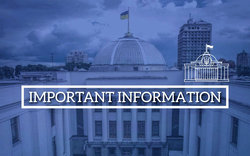 includes regulation of TV and radio activities and "a ban on the operation amateur radio transmitters for personal and collective use."
includes regulation of TV and radio activities and "a ban on the operation amateur radio transmitters for personal and collective use.".jpg) The latest episode of the On the Air podcast (Episode 26) features a conversation with two YouTube veterans -- Dave Casler, KE0OG, and Steve Goodgame, K5ATA. YouTube is increasingly becoming the "go-to" resource for information on a variety of amateur radio topics.
The latest episode of the On the Air podcast (Episode 26) features a conversation with two YouTube veterans -- Dave Casler, KE0OG, and Steve Goodgame, K5ATA. YouTube is increasingly becoming the "go-to" resource for information on a variety of amateur radio topics..jpg) The latest edition of the Eclectic Tech podcast (Episode 54) features a chat with Barry Feierman, K3EUI, concerning the use of the VARA digital mode with handheld FM transceivers. Also, the end of Google's "Project Loon."
The latest edition of the Eclectic Tech podcast (Episode 54) features a chat with Barry Feierman, K3EUI, concerning the use of the VARA digital mode with handheld FM transceivers. Also, the end of Google's "Project Loon."(1).jpg) digital and radio frequency hardware and software, most recently as telecommunications lead for the Ingenuity Mars Helicopter.
digital and radio frequency hardware and software, most recently as telecommunications lead for the Ingenuity Mars Helicopter.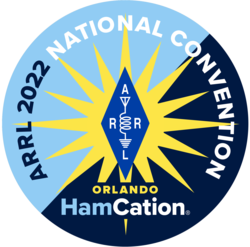 going forward. Michelle Thompson, W5NYV, the CEO of Open Research Institute (
going forward. Michelle Thompson, W5NYV, the CEO of Open Research Institute (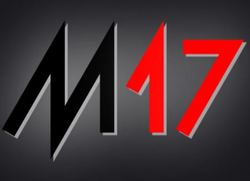 The
The 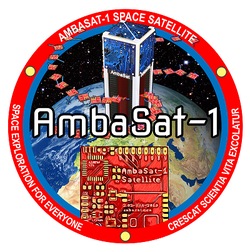 which operate at 70 centimeters, have been distributed to the firmware team, and they have begun development and are seeing success in university and hobbyist labs," she reported. "The goal is to create a compelling application, put the hardware on a sounding rocket, apply for a launch license, and send this project into space in a way that makes the amateur community proud."
which operate at 70 centimeters, have been distributed to the firmware team, and they have begun development and are seeing success in university and hobbyist labs," she reported. "The goal is to create a compelling application, put the hardware on a sounding rocket, apply for a launch license, and send this project into space in a way that makes the amateur community proud."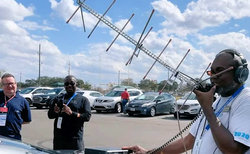
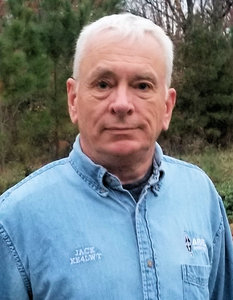
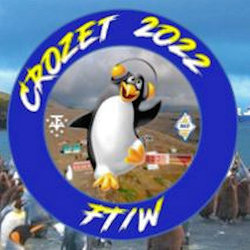 are administered as part of the French Southern and Antarctic Lands (abbreviated in French as TAAF).
are administered as part of the French Southern and Antarctic Lands (abbreviated in French as TAAF).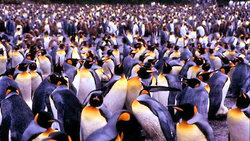 landing, not everything can be brought to the island. Imagine being on the island without a station!"
landing, not everything can be brought to the island. Imagine being on the island without a station!"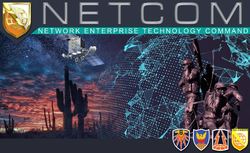 Slides and the chat log
Slides and the chat log.jpg) Amateur Radio on the International Space Station (
Amateur Radio on the International Space Station (-1.jpg) Members of the Network of Emergency Operations of Amateurs (ROER) in Petrópolis activated.
Members of the Network of Emergency Operations of Amateurs (ROER) in Petrópolis activated.-2.jpg) private VHF system, which serves the Municipal Guard, Petropolitan Transit, the Secretary of Civil Defense, and the Secretary of Health.
private VHF system, which serves the Municipal Guard, Petropolitan Transit, the Secretary of Civil Defense, and the Secretary of Health.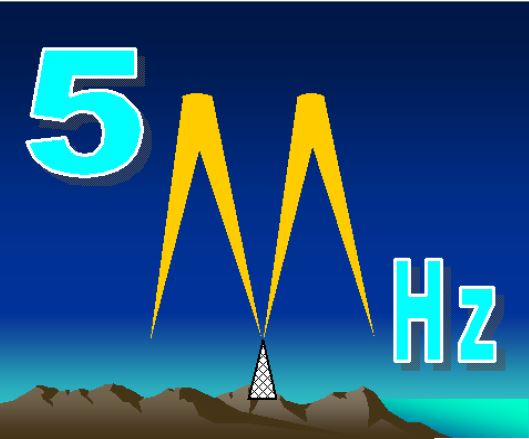 by Paul Gaskell, G4MWO, offers official news of new allocations and regulations as well as feedback from operators.
by Paul Gaskell, G4MWO, offers official news of new allocations and regulations as well as feedback from operators..JPG)
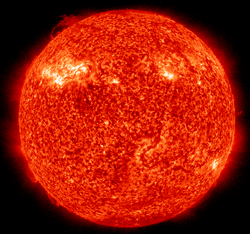 Predicted solar flux is 100 on February 24; 105 on February 25 - March 2; 110 on March 3 - 4; 108 on March 5 - 8; 105 on March 9 - 11; 103 on March 12 - 13; 100 on March 14; 98 on March 15 - 16; 102 on March 17 - 19; 104 on March 20 - 22; 108 on March 23 - 26; 110 on March 27; 115 on March 28 - 29, then 112 and 110 on March 30 - 31.
Predicted solar flux is 100 on February 24; 105 on February 25 - March 2; 110 on March 3 - 4; 108 on March 5 - 8; 105 on March 9 - 11; 103 on March 12 - 13; 100 on March 14; 98 on March 15 - 16; 102 on March 17 - 19; 104 on March 20 - 22; 108 on March 23 - 26; 110 on March 27; 115 on March 28 - 29, then 112 and 110 on March 30 - 31.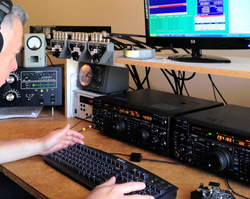 February 28 -- OK1WC Memorial (CW)
February 28 -- OK1WC Memorial (CW)







